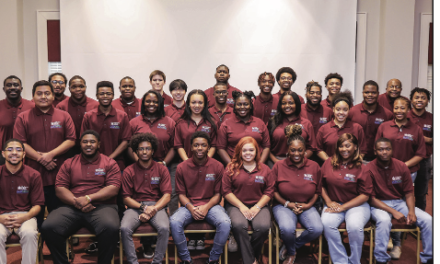By Mark Brown,
Word in Black
In 1944, President Franklin Roosevelt signed the Servicemen’s Readjustment Act, which became one of the largest social investments ever made by the federal government.
Thanks to what became known as the GI Bill, millions of WWII veterans were able to take advantage of education and housing benefits. Because of this investment, the number of college degree holders doubled between 1940 and 1950, and 5.3 million home loans were distributed, accounting for 20 percent of new homes built following the war.
Yet, these benefits were heavily skewed towards White Americans. According to Brandeis University, systemic barriers such as Jim Crow and de facto segregation and discrimination obstructed an average of $180,000 (adjusted for inflation) from reaching many Black veterans.
As the states now focus on distributing funding from the bipartisan Infrastructure Investment and Jobs Act (IIJA), we are at risk of Black communities once again being left behind on a once-in-a-generation social investment.
When President Biden signed the IIJA in 2021, the law earmarked $65 billion to expand broadband services in unserved and underserved communities. Within that funding, $42.45 billion is reserved for the Broadband Equity, Access, and Deployment (BEAD) Program, a formula-based program that will decide the distribution of funds to states, territories, and D.C.
These funds will be distributed to individual states based on their projected need, then states will decide how much to allocate to local community projects. Given our nation’s once-in-a-lifetime investment in broadband, and directives learned from the GI Bill that will ensure funding is fairly distributed to unserved and underserved communities, advocates and officials must remain vigilant to distribute these funds to Black communities and regions home to HBCUs.
The federal government currently plans to base funding allocations on current FCC estimates of broadband penetration. Yet in many cases, these maps incorrectly label regions as sufficiently connected, particularly around HBCUs. While across the United States nearly 25 percent of students lack adequate internet access, when we look at HBCU students, that number more than triples as 82 percent of our nation’s HBCUs reside in broadband deserts.
To ensure these vehicles of social and economic mobility — which produce 75 percent of Black PhDs, 80 percent of Black Federal Judges, and 50 percent of all Black engineers — can provide students with the resources they need to succeed in our digital economy, they must have access to reliable and affordable broadband services.
The effects of this digitization would ripple across our entire economy and narrow the dual racial wealth and opportunity gaps. While Black consumers spend over $800 billion each year, we have the potential to unlock another $300 billion simply by eliminating the digital divide. Even a modest expansion of broadband services would add fuel to our economy at a time of great uncertainty. According to Deloitte, a 10 percent increase in broadband penetration in 2016 would have resulted in more than 806,000 new jobs by 2019; if we had accomplished this in 2014, it would have added nearly $200 billion in economic output over five years.
With the addition of IIJA funding, HBCUs would become local hubs of innovation to their local communities, which house over half of all Black Americans. These funds will be allocated to states on June 30, 2023. Until that time, we call on the public to contact their local, state, and federal officials and demand this allocation target communities most in need.
Once allocations are announced, states have 180 days to outline the individual community plans to utilize federal funding. To take advantage of these funds, HBCUs and their local communities can create Digital Equity Connectivity Plans.
Through the Student Freedom Initiative’s partnership with Connect Humanity, we were able to create one of these Plans for Claflin University in South Carolina. The strategy outlined was critical in positioning Claflin to receive funding and coordinate with partners to install the necessary hardware and software that will now deliver high-speed broadband across campus.
To scale our ability to reach other schools, SFI and Connect Humanity have formed Connect101, whose sole focus is to assist HBCUs with creating these Plans.
If we as a nation are serious about following through on the pledges made to fight for racial justice, now is the time to prove it. We have a real chance to build equity into our digital infrastructure — we must not miss this opportunity.
Dr. Mark Brown is the executive director of the Student Freedom Initiative.
Editorial Note: Word In Black, which originally published this article, is currently working on a multidimensional proposal in partnership with the Student Freedom Initiative to address the numerous opportunities outlined in this op-ed.
The post A chance to close the digital divide in Black communities appeared first on AFRO American Newspapers .











